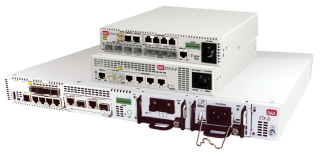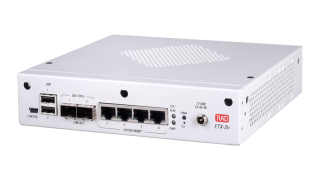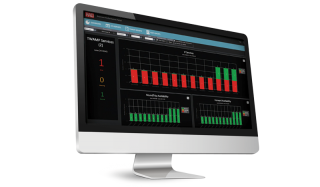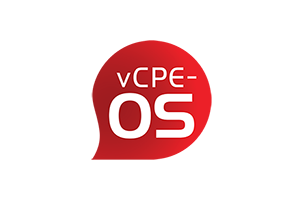Your Network's Edge®
Application Briefs
You are here
Business Edge vCPE – Cloud Adoption Made Easy
The acceleration in enterprises’ digital transformation is driving major changes in telcos’ business customer needs. By 2023, 50% of enterprise network services are estimated to be delivered using cloud technology¹. From SMEs relying on SaaS, enterprises moving to XaaS and all the way to “Born in the Cloud” organizations, these changes drive the transformation of the network and CSP offerings. As emerging services and applications pose special requirements in terms of performance, latency, resiliency, and local storage, compute infrastructure is increasingly getting closer to the edge. As a result, CSPs are extending compute services and storage closer to users to avoid transmitting large amounts of data to remote DCs and to enable new applications: IoT, autonomous systems, client/server, device/cloud applications, and more.
RAD’s vCPE edge portfolio includes everything CSPs need to deploy virtualization services today:
- Slim, high performance disaggregated operating system
- A range of thin and thick CPEs hosting VMs or containers
- A domain orchestrator to remotely manage virtualization functionalities and automate operations
It is designed to help service providers leverage their “real estate” – that is, the network and customer edge – in introducing value-added services (VAS) beyond simple connectivity. These include hosted zero-trust secured access (Secure Access Service Edge services – SASE), latency-sensitive applications and more.
RAD’s Virtual Business Edge Solution Benefits:
- Freedom to choose any vCPE hardware, per branch site requirements, with a common operating system in all vCPEs to minimize integration efforts and reduce costs
- Host value-added VMs and containers on premises or in data center/cloud as needed
- Rapid transition from branch-HQ connectivity to branch-cloud connectivity
- Open, lightweight vCPE-OS with a powerful embedded router, firewall and virtualization resources manager. It runs on a fraction of a CPU core, requires extremely low memory and provides market leading throughput
- Support “Cloud-First” business customers with SD-CloudAccess
RAD’s vCPE architecture follows three main principals:
- Disaggregation: Freedom to use any hardware and virtual functions of choice, with the same common vCPE-OS operating system
- Automation: All vCPE solutions are managed by the RADview Domain Orchestrator for consistent operations of business services and edge devices, across all sites
- Virtualization: vCPE functionality is shaped by the introduction of hosted virtual functions by any vendor, at any time
Solution Components
All vCPE services are supported by RAD’s business edge portfolio. A range of hardware devices cater for the requirements of business sites, large or small, as well as for outdoor locations, where IoT gateways are required to meet strict ruggedizing standards.
The vCPE-OS serves as the virtualization infrastructure with embedded routing and firewall functionality. It is used to operate all CPE platforms, whether x86 or ARM-based, in ruggedized and non-ruggedized enclosures.
The RADview Domain Orchestrator provides consistent operations of business services and edge devices, across all sites. It offers full life cycle support (zero-touch provisioning, software updates and maintenance), SDN/NETCONF support, VNF onboarding and chaining, and automatic set up of network tunnels.

RAD’s vCPE edge portfolio includes three CPE options, all of which supporting all connectivity services as described below.
uCPE – The Thick CPE
The disaggregated uCPE allows CSPs to tailor a multi-function vCPE with a single device, hosting VMs/VNFs. This helps users not only to avoid the use of multiple concatenated devices at their premises, but also to augment edge functionality on-demand by remotely downloading new functions onto their vCPEs. The uCPE is running on any x86 off-the-shelf hardware and includes a powerful embedded router.
pCPE – The Thin CPE
The pCPE is a thin, economical and disaggregated CPE that runs on a range of hardware boxes, in which valueadded services are hosted as containers. Starting at a low-cost two-core ARM device, it can alternatively run on any x86 off-the-shelf hardware. The pCPE includes an embedded router and a next-generation firewall.
IoT Gateway
Designed to address business sites with harsh environmental conditions, including extreme temperatures and dust, the IoT Gateway is a pCPE that is packaged in a ruggedized device. It can also be used to aggregate traffic from legacy devices with serial or analog interfaces, as well as host third-party containers.
The following describes a range of business connectivity services ranging from VPN to cloud access services. Different businesses and even different sites are free to choose their preferred connectivity option based on their current requirements and upgrade it later in time as their needs evolve. Various sites of the same organization may deploy different business edge vCPE options and have them stitched together into a single business VPN.
Managed Business Router / Customer Edge Replacement
A disaggregated vCPE is an ideal up-to-date replacement option for legacy business routers that are due to be replaced.
This option includes a managed business router that provides MPLS VPN access and can be used to host multiple functions that otherwise may have been implemented using several boxes.
The disaggregated vCPE releases the service provider from vendor lock-in, allowing the hosting of best-of-bread functions by any vendor and the use of off-the-shelf hardware.

Overlay VPN over Fixed/Mobile Broadband Network
With VPN over broadband, business sites are not bound to MPLS access links and can instead connect to the organization’s VPN over fixed or mobile broadband access links, either as the primary link or as backup to the MPLS ones.
This allows the CSP to expand its L3 VPN services to unserved sites, as well as offer its enterprise customers the ability to connect pop-up business sites to the corporate VPN.
Such connectivity services use a secure overlay either over the service provider’s own broadband access links or over third-party provider networks.

SD-CloudAccess
For “Cloud-first” enterprises, or business customers that are transforming to the cloud, RAD offers SD CloudAccess. By introducing application-aware traffic steering across multiple links, this solution enables businesses to benefit from SLA guarantees for their cloud access services.
SD-CloudAccess uses a single set of overlay tunnels that are terminated at a virtual cloud gateway, typically deployed at the service provider’s edge. By landing all traffic at their network’s edge, service providers can use their own footprint to host value-added cloud and cloud on-ramp services, such as hosted SASE.

Use Case 1
A SE Asia telecom giant is using RAD’s business edge vCPE solution to completely transform its network and business services offering to NFV/SDN. Until recently, the CSP’s main service portfolio has focused primarily on IP VPNs, however they have also been attentive to the increasing demand for modern business solutions that help enterprise clients to evolve their businesses. RAD’s solution is used to continue delivering existing IP VPN services over MPLS with backup over broadband, but also to enable a myriad of VAS that were simply not possible until now – leveraging the CSP’s existing data center infrastructure, or hosted in VMs/containers within the CPE, to do so. Such services include customized firewall, DDoS solutions, Intrusion Detection Systems (IDS) / IPS, and more.
RAD’s solution includes both thin and thick CPE platforms with zero-touch provisioning. These are deployed at business premises in large volumes and running on an open vCPE-OS that manages the virtualization resources, as well as the RADview Domain Orchestrator integrated with the SDN/NFV Orchestrator selected by the service provider. This allows enterprise and SME end-customers to use a self-service portal to independently deploy and activate various functions of their business data service.

Use Case 2
A tier-1 telco in Latin America has shifted its SD-WAN business offering into a fully open MANO ecosystem using RAD’s vCPE platforms, operating system and orchestration layer: The ETX-2v, vCPE-OS and RADview Domain Orchestrator, respectively, as well as GPON support to allow flexible connectivity. In addition to providing an endto- end solution and flexibility in supporting the CSP’s own VMs, one of the key deciding factors in selecting RAD’s solution was the outstanding performance of the vCPE-OS in terms of available bandwidth and extremely low resource consumption.

To learn more about RAD’s solutions for a multiservice virtual business edge, contact us at [email protected]
 Typical Users
Typical Users
- Communications Service Providers
- Internet Service Porviders
 Typical Application
Typical Application
- Multi-cloud Access
- Smart Branch Connectivity
- VPNs
Related Products
The ETX-2i provides MEF 3.0 demarcation and aggregation over any access, including over LTE/broadband. Its FPGA architecture flexibly adapts to future customer needs.
The ETX-2v products support a wide range of business customers and user scenarios, from small offices to large sites, using a variety of bandwidth, processing power and LAN/WAN options.
The RADview features a network element manager, end-to-end service manager for Carrier Ethernet services, performance monitoring portal for ongoing monitoring of Ethernet and IP services, D-NFV orchestrator for virtual machines and application services at the customer edge, and a network planner for resource optimization and capacity planning.
Featuring client/server architecture with multi-user support, RADview provides intuitive graphic representation of network clouds, links, nodes, end-to-end services, and network status indication. Fully ITU-T FCAPS compliant, it offers security management supporting user access profiles and allowing network partitioning.
RAD’s vCPE-OS is interoperable with open source management platforms, and easily integrates with standards-based SDN controllers, orchestrators and operations/business support systems (OSS/BSS) from major providers. Featuring a comprehensive management and security suite, vCPE-OS is unique in its convergence of key OS components of NFV infrastructure (including a KVM hypervisor, Open vSwitch, OpenStack, and other elements) with embedded networking capabilities and integrated drivers for LTE and Wi-Fi. In addition, it enables seamless integration of RAD’s pluggable physical network functions (PNFs), such as OAM, Timing, TDM, DSL, and PON.






